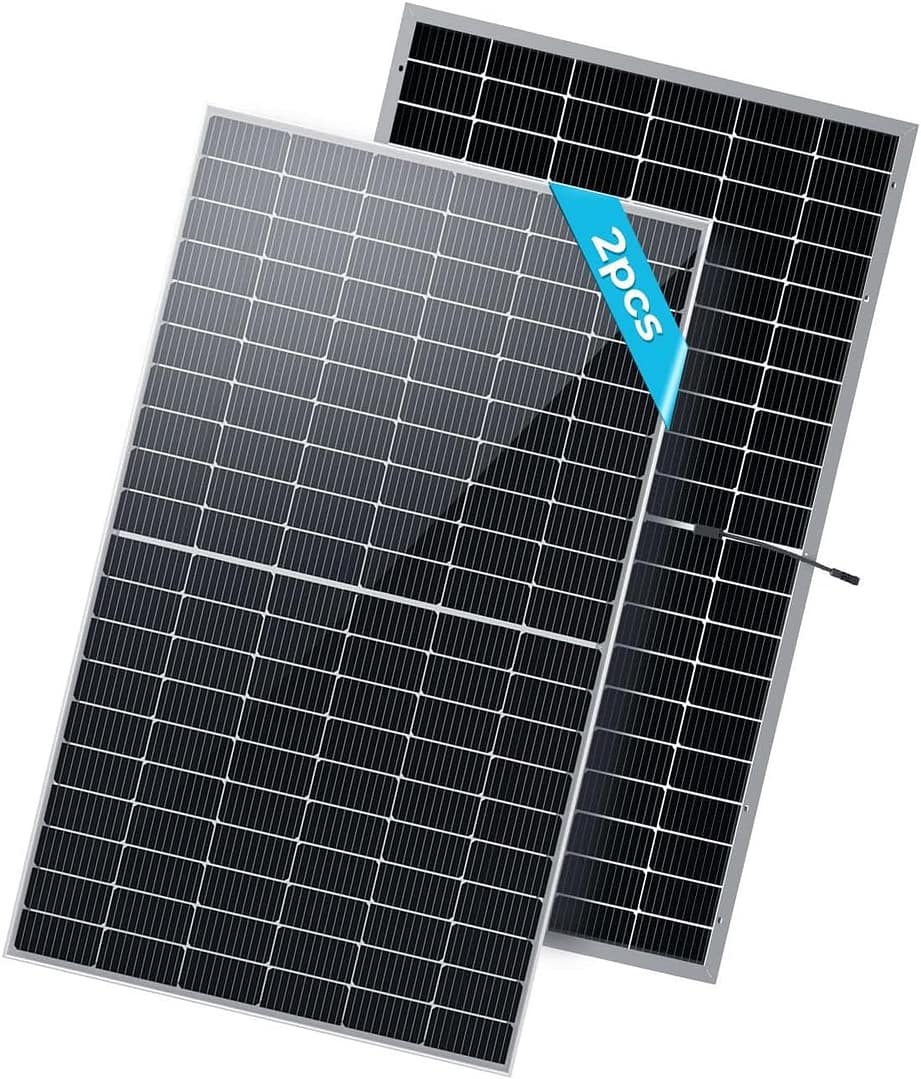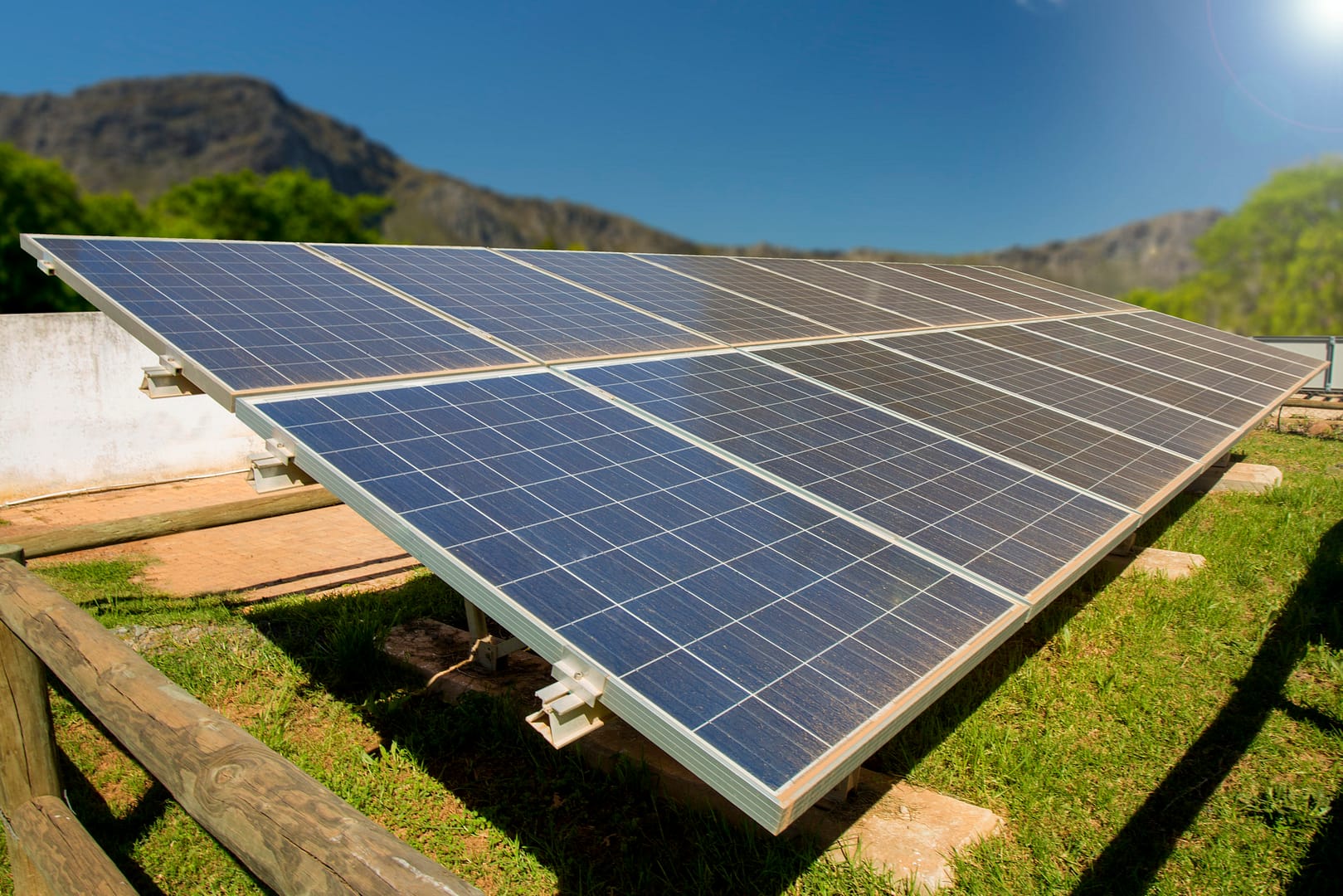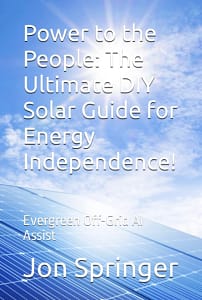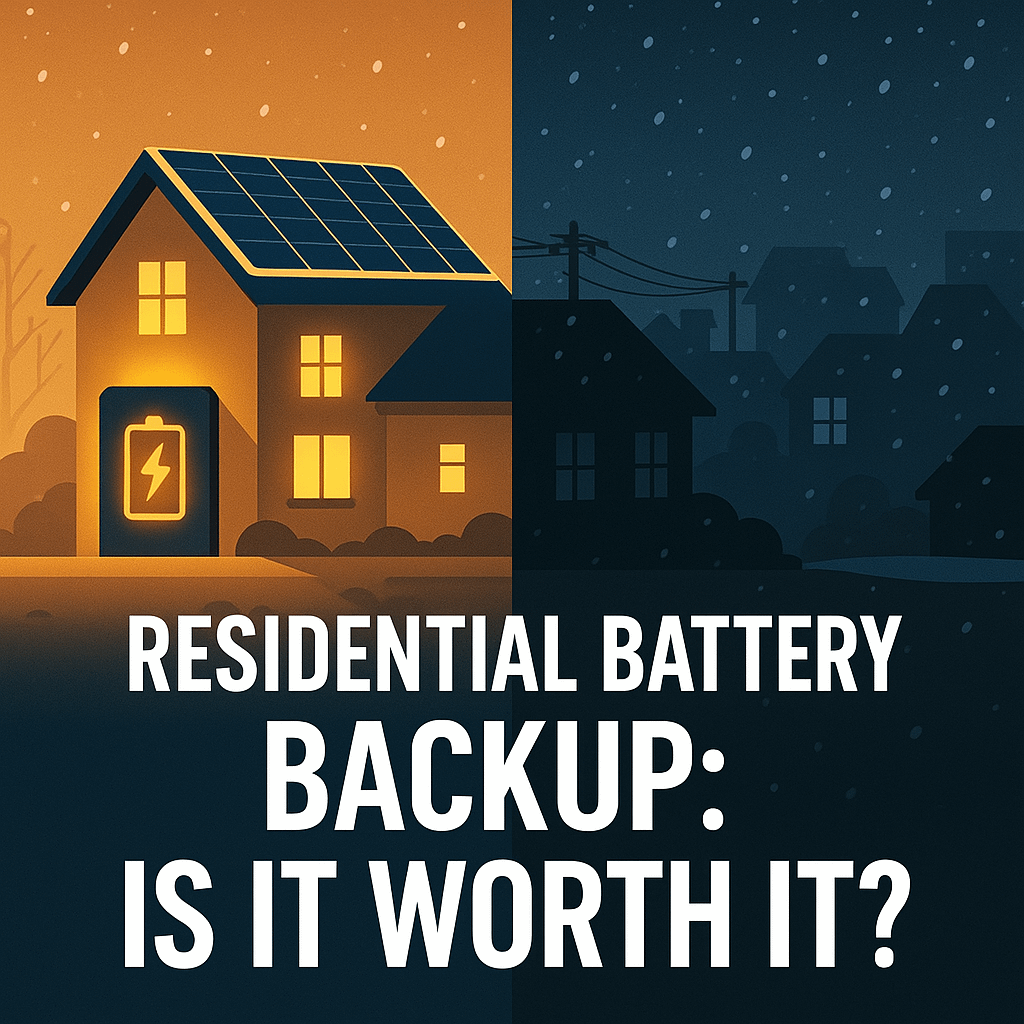Thank you for visiting Evergreen Off-Grid! If you want to learn about sizing a grid-tied solar photovoltaic (PV) system please check out our previous edition here . But if you’re here to learn how to size your off-grid PV system, you’ve come to the right place. So, let’s get into it.
No Matter How Tall the Mountain Is, It Can Not Block the Sun.
-Chinese Proverb
What Do You Want to Power?
So… what do you want to power? This is the most fundamental question to ask yourself when sizing your solar PV system. Your options are constrained only by your budget. You can power a cell phone charging bank or a loaded off-grid mansion.
We’ll go over some approaches for you to figure out how many panels it will take to power your off-grid needs. If you want to brush up on your solar basics, check out our article Say Watt?! We talk about Watts (W) vs kilowatts (kW) vs kilowatt-hour (kWh), solar panel rating and more. Check it out!
Go Big and Go Home!
Are you packing up and taking your whole family off-grid? Do you plan to live like you did on the grid…just way, way, far away? In this case, the most reliable option is to analyze your electric bill. Your electric bill contains the design requirements for your off-grid solar PV system. There are other approaches as well. Depending on your needs you may have to get creative. Try these approaches to estimate how much energy your off-grid, mega-pad or your mini bug out shelter will need.
Note: As an affiliate I earn from qualifying purchases.

Renogy Bifacial 2pcs 450 Watt Solar Panels 12/24 Volt Monocrystalline PV
$939.99 Original price was: $939.99.$874.11Current price is: $874.11.
Analyze Your Electric Bill
If you’re going the mega-pad route then check out your electric bill. Depending on where you live you are likely to see distinct peaks in your energy usage around the time(s) of year when your thermal loads are the highest. When we say thermal loads, think heating and air conditioning. When it comes to racking up your energy bill, heating and air conditioning are the biggest offenders.
So, if you plan to live as comfortably off-grid as you do on-grid, your energy use in these peak months are the parameters you will need to design your system to. Find the billing period with the highest usage and use that cycle as the basis of your design. We’re talking energy, so find the kilowatt-hours (kWh).
Looking to take control of your energy bill and build your own solar power system? Look no further than “The Ultimate DIY Solar Guide” by Jon Springer! This competitively priced, comprehensive guide is packed with insider tips and expert guidance to help you build a solar power system tailored to your specific needs. With step-by-step instructions you’ll learn everything from sizing your system to troubleshooting common issues. Start your solar power journey today and join the movement towards energy independence! Order your copy of “The Ultimate DIY Solar Guide” now on Amazon.
Just Ball Park It
If you’re just looking for a ball park idea of your annual energy consumption habits perhaps you compare similarly to your neighbors. The typical US household consumed an average of 10,715 kilowatt-hours in 2020. If you live in Hawaii you and your neighbors average the lowest at 6,446 kWh per year. Congratulations, Hawaii. But, if you lived in Louisiana then your neighbors are among the most energy hungry in the country with the average home consuming 14,407 kWh per year.
Unless you are especially careful about your energy consumption, or if you’re extraordinarily wasteful, expect your use to fall somewhere in this range. Check out the chart below. How does your energy usage compare to the consumers in your demographic?

How Lavish do you Really Need to Be Off-Grid?
Ok, so this is really a personal question and not one of judgment. Only you know what your circumstances call for. If I asked my wife to move into a cave with me you might want to catch the reaction on video, it could go viral. I get it. But if I told her the cave had heating and AC, cable TV, an internet connection and an amazing view she might be willing to listen… well maybe. So, what do you need?
Create a Detailed Estimate of your Energy Usage
If the energy needs of your off-grid system will be less than (or more than) what you typically use at home you will need to estimate your usage. In order to estimate your usage, you need to identify everything you plan to power. Your estimate needs to include everything. Lights, hard-wired loads like heaters, plug-in loads like computers and televisions, and everything down to anticipated cell phone charging. A simple table like the one that follows is useful.
Table 1: My Bug-Out Cabin Energy Load Profile
| 24 hr clock | Refrigerator1 | TV2 | CPU3 | Interior Lighting4 | Exterior Lighting5 | Phone Charging6 | Etc.7 | Total |
| 0000 | 50 | 100 | 150 | |||||
| 0100 | 50 | 100 | 150 | |||||
| 0200 | 50 | 100 | 150 | |||||
| 0300 | 50 | 100 | 150 | |||||
| 0400 | 50 | 100 | 150 | |||||
| 0500 | 50 | 100 | 150 | |||||
| 0600 | 50 | 100 | 100 | 250 | ||||
| 0700 | 50 | 50 | 100 | 100 | 300 | |||
| 0800 | 50 | 50 | ||||||
| 0900 | 50 | 50 | 100 | |||||
| 1000 | 50 | 50 | 100 | |||||
| 1100 | 50 | 50 | ||||||
| 1200 | 50 | 50 | 100 | |||||
| 1300 | 50 | 50 | ||||||
| 1400 | 50 | 50 | ||||||
| 1500 | 50 | 50 | ||||||
| 1600 | 50 | 50 | 100 | |||||
| 1700 | 50 | 50 | 100 | |||||
| 1800 | 50 | 50 | 20 | 120 | ||||
| 1900 | 50 | 50 | 100 | 20 | 220 | |||
| 2000 | 50 | 100 | 100 | 20 | 270 | |||
| 2100 | 50 | 100 | 100 | 20 | 270 | |||
| 2200 | 50 | 100 | 150 | |||||
| 2300 | 50 | 100 | 150 | |||||
| Total | 1,200 Wh | 200 Wh | 200 Wh | 500 Wh | 1,200 Wh | 80 Wh | 3380 Wh |
The notes below are associated with the energy load profile table above. They provide a short discussion intended to help you understand the kind of thinking that goes into this type of analysis. We won’t capture every piece of equipment you may want to connect in this article, but the idea is to help you understand the approach so you can come up with your own estimate. To find the power consumption of your devices find their specifications online.
Notes
- Assume constant consumption of 50 W. Refrigerator power consumption varies throughout the day as the compressor cycles and as the door is opened and closed. Rather than predict the moment-to-moment behavior of the fridge we’ll just average throughout the day. The average annual refrigerator uses about 1 to 2 kWh per day. I chose 1,200 kWh per day because it divides nicely by 24 hours to give me 50 Wh per hour, or the equivalent of a constant power draw of 50 Watts. For your purposes, you need to find the annual consumption of the refrigerator you plan to use. Consumption varies widely.
- A modern TV consumes about 50 W when in use. Let’s say the household watches an hour of tv in the morning, an hour at lunch and two hours in the evening time. This will need to be tailored for your situation.
- Let’s say we’re charging a simple laptop for two hours, twice a day.
- We’re assuming we wake up around 6 am and it’s dark. We turn the lights off at 8 am when the sun is out. The sun sets that day about 7 pm and the lights go on until everyone goes to bed at 10 pm. This is a super generalized lighting schedule that can be detailed to a much more granular level for your purposes. For example, what if some lights are left on and others aren’t? What if you’d like to have a nice light schedule but your co-inhabitants won’t cooperate? You need to account for what time lights are actually turned on and off.
- We turn the outside lighting on about 8 pm and leave it on until the sun is shining at 8 am.
- Our family of four each use their 5-Watt cell-phone chargers for the same four hours in the evening. This may be the most absurd of my examples, but let’s just go with it.
- You need to log every single piece of equipment you intend to power and go through this type of analysis. When is it used? How much power does it draw? Does it draw constant power? If not, consider averaging like I did for our refrigerator example.
What Does Our Table Tell Us?
This table actually tells us quite a bit about how to size our system. Let’s continue to humor me and pretend that the six loads I’ve listed in this load profile table are all we will need this example off-grid system to power. If this table were complete for my system, I could tell you how much energy I will use in a given day. It will also tell me what my peak usage will be. In addition to helping us figure out how many solar panels we need, the information in this table will help us size our battery bank and our inverter.
Use the Energy Use to Size Your Battery Bank
In another edition we teach you to use this information to size your battery bank. In short, the daily total energy use is applied to a multiplier to determine how many days of standby energy you want in your battery bank if the clouds try to foil your generation plans.
Note: As an Amazon Associate I earn from qualifying purchases.
Find Your Daily Peak Energy Usage
Let’s be realistic… can all these items realistically be energized at the same time? Once again, there are several factors to consider in order to determine your actual peak energy use. We will go over a more detailed estimate for inverter sizing in another edition. For now let’s look at the table and find the hour when we have the highest power draw. I see 300 Watts at 0700. This is a super rough peak use estimate.
How Many Panels do I Need?
So, we’re back to the original question. By looking at the last entry in the last row of our table, we see we need to generate 3,380 kWh of energy per day to match our load. How many panels does it take to generate that much electricity?
There are several factors that will determine how much energy your panels will produce. Some of these factors include your location, the direction your panels are pointed, the angle your panels are tilted, the efficiency of your panels, temperature and more. A precise calculation is outside the scope of this article and would be best performed using software that is designed to figure this out for you. Solar installers will use this software in order to specify your system.
The goal of this article is to help you with back of the envelope calculations. We want you to understand what type of information is considered in these calculations so you can have a solid understanding of what you are building.
Solar Insolation
The first factor we will consider, which is of great importance is where in the world your panels are located. Location is heavily influential in PV panel output. The same panel will produce less energy in Seattle than it will in San Diego.
The way we measure how much solar energy is hitting your solar panels is by calculating solar irradiance. Solar irradiance is measured in kilowatt-hours per square meter (kWh/m2). Irradiance measured over time is called insolation, measured in kWh/m2/day. Or, how many watts of solar energy, on average, lands on every square meter of land in your neck of the woods, every single day. A quick google search tells me that number is about 4,000 watt-hours in my neck of the woods. So, for our example, we’ll assume we get 4 kWh / m2 / day of solar energy on our panels.
Efficiency
Wouldn’t it be great if we were able to generate 4 kWh on every square meter of our panels every day!? Well, we won’t. Our panels only convert 20% of that energy into electricity. So rather than 4 kWh / m2 / day, our panels are capable of generating 20% of that or 0.8kWh / m2 / day.
Using Area to Estimate Number of Panels We Need
The average panel is about 1.6 m2. So let’s see how many kWh we get per panel using the equation below:
(0.8 kWh / m2 / day) * (1.6 m2 / panel) = 1.28 kWh / panel / day.
We need 3.38 kWh (3,380 Wh) per day in our example.
1.28 kWh * X number of panels = 3.38 kWh X = 3.38/1.28 = 2.64 Panels. We can’t have 0.64 panels so using this method we estimate 3 panels will serve our needs.
Another Method to Estimate Number of Panels
In my region it is estimated that 1,000 W of installed solar panels will produce 1,200 kWh per year, or if you divide by 365 you get 3.28 kWh per day per 1,000 W of installed solar panels. Once again, we estimated our daily energy needs at 3.38 kWh. So, let’s solve:
1,000 W / 3.28 kWh = Needed Watts / 3.38 kWh
Needed Watts = 970 W.
If your panel is 330 W, then 3 of them will provide 990 W, which is enough to power your system and tracks with our previous estimate. If the panels were rated for less power, then we would need more panels. Let’s assume our panel was 200 W instead of 330 W. We would need five, 200 W panels to cover our load requirement of 970 W.
Future Expansion
Have you considered your plans for the future? For the most part, this isn’t critical to do up front. As long as you go with the same manufacturer and match specifications you shouldn’t have any problem building out your system in the future if need be. If this is a topic you’d like to explore further drop us a note: info@evergreenoffgrid.com
Thank you so much for reading our blog! Please drop a comment below and don’t forget to subscribe now so we can continue to answer all your off-grid questions!






